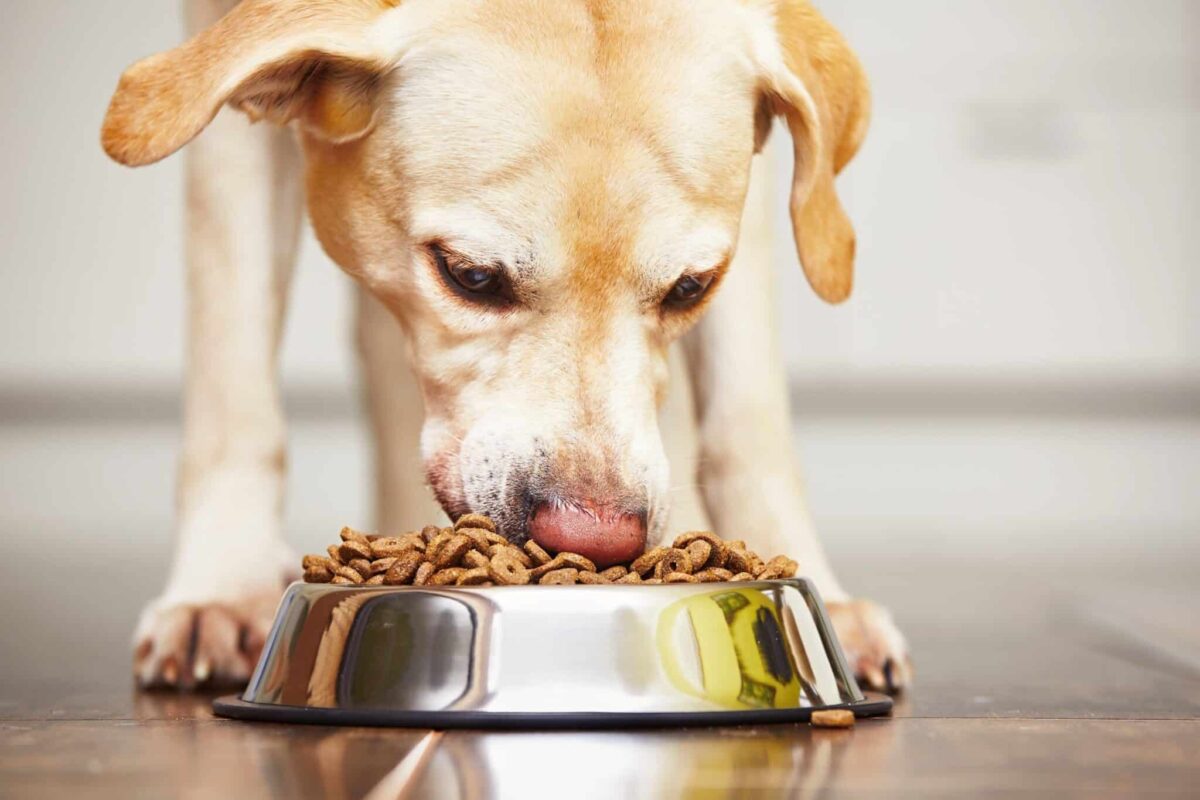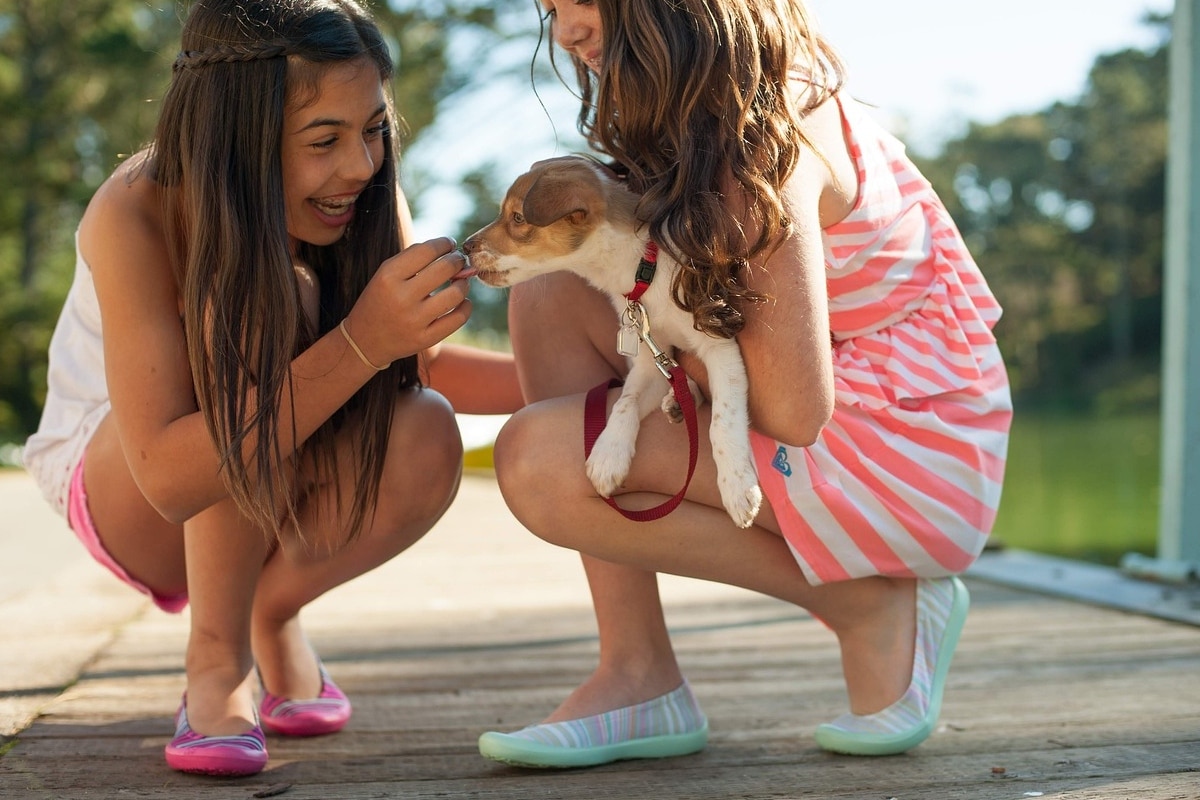As much as we love our dogs, sharing a meal with them constantly staring, begging, or trying to steal food can be frustrating. Fortunately, there are ways to discourage this behavior and make dining a more pleasant experience for everyone. Here are 12 effective tips to help your dog become a better dinner guest and to keep those puppy-dog eyes away from your plate.
#1 – Teach “Leave It”
Teaching your dog the “leave it” command is one of the most effective ways to prevent begging or food-stealing. This command tells your dog to ignore something, whether it’s food or another object of interest. A well-trained “leave it” should work with a single command, helping your dog learn to stop bothering you without repeated reminders. Remember to be patient and consistent while practicing this command – it’s worth the effort!
#2 – Practice Mat Training
Training your dog to go to a designated spot, like a mat or bed, and stay there during meals is a great way to keep them from begging or jumping up. It’s helpful if the mat is placed at a comfortable distance from the dining table, but still within sight, so your dog doesn’t feel left out. Once your dog associates mealtime with their spot on the mat, they’ll be less likely to bother you while you’re eating.
#3 – Feed Your Dog at the Same Time You Eat
If your dog has their meal while you have yours, they’ll be more occupied and less focused on your plate. Feeding them in their crate or in a designated dining area can help establish this as a calm and structured time for both of you to eat without interruptions. They’ll learn that their food is separate from yours and start to settle into this routine.
#4 – Establish a No-Scraps Rule
Avoid rewarding your dog’s begging behavior by giving them scraps at the table. Dogs are quick to pick up on patterns, and if they get food even once for begging, they’re likely to try again. Make sure everyone in your household (and guests!) follows this rule to avoid mixed messages that might reinforce bad behavior.
#5 – Reward Good Behavior
Positive reinforcement works wonders in training. When your dog behaves well during your meals, such as sitting calmly or staying on their mat, reward them with a treat or praise. By consistently rewarding them for good behavior and never rewarding them for begging, they’ll start to understand what’s expected and will be more likely to behave well at mealtimes.
#6 – Keep Food Out of Reach
While you’re training your dog, avoid leaving food where they can easily snatch it. If your dog successfully steals food even once, they may continue trying because they’ve been “rewarded” for the behavior. Place food on high counters or in closed spaces where they can’t reach it, helping reinforce that only their designated food is accessible.
#7 – Use Food-Dispensing Toys
If you don’t crate your dog during meals, consider giving them a food-dispensing toy or puzzle feeder. These toys keep dogs engaged, providing mental stimulation and a fun challenge. The toy will occupy their attention and allow you to enjoy a peaceful meal without interruption.
#8 – Teach “Off”
If your dog tends to jump on chairs, tables, or your lap while you eat, teaching them an “off” cue can be helpful. This command encourages your dog to get down or back off, keeping them from invading your space. Be mindful, though—some dogs may test this by jumping intentionally, hoping for a reward after they “obey.” If you notice this, switch to only rewarding them when they don’t jump at all.
#9 – Exercise Before Meals
A tired dog is often a well-behaved dog. Before meals, take your dog for a walk or engage them in a play session. This can help burn off excess energy, making them more inclined to rest or relax while you’re eating. A dog who’s already satisfied from physical activity is less likely to be hyper-focused on your meal.
#10 – Use a Tie-Down
A tie-down is a short leash or rope attached to something sturdy, allowing your dog to remain nearby but preventing them from getting too close to the table. This can be an effective temporary solution while they’re learning to stay in place or settle during meals. Make sure to provide them with a chew toy or bone to keep them engaged and reward calm behavior.
#11 – Remove Them for Bad Behavior
If your dog is disruptive during meals, calmly remove them from the dining area. This could mean placing them in a separate room, behind a gate, or in their crate until they settle down. Leaving a leash on your dog can make this process easier and gentler. Over time, they’ll associate bad behavior with being separated, helping discourage it.
#12 – Watch the Kids
Children often find it hard to resist giving their dog treats or sharing their food, which can reinforce begging behavior. Additionally, kids may have food in their hands that a dog can easily jump for. By leaving a leash on your dog, you can gently step on it to prevent jumping or remove them if they’re getting too close to a child’s food. Teach kids to avoid giving food to the dog at the table and to eat with their hands up or on the table to minimize temptation.
Final Thoughts
With consistency, patience, and positive reinforcement, you can teach your dog to be a respectful dinner companion. By following these tips and setting clear boundaries, you’ll create a calm, enjoyable dining experience for both you and your pet. Over time, your dog will learn that mealtime is your time, allowing you to savor your meal without those watchful puppy eyes tracking your every bite.





 Toledo, United States.
Toledo, United States.